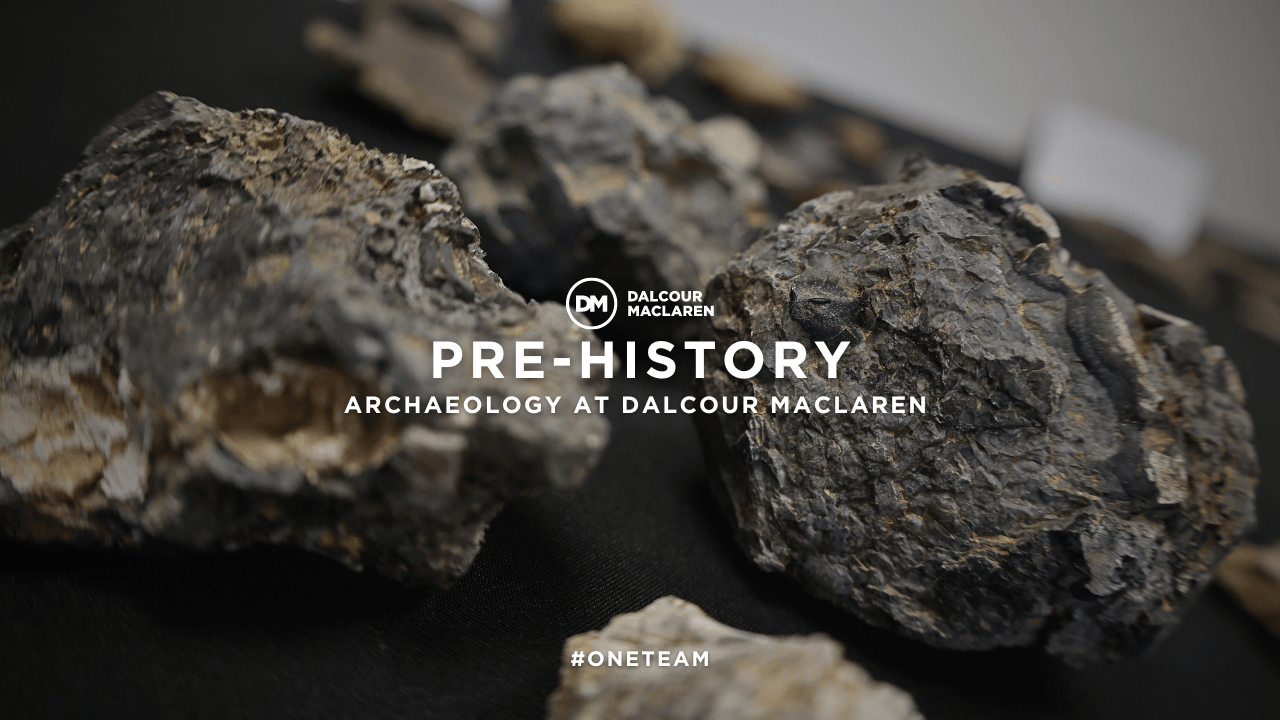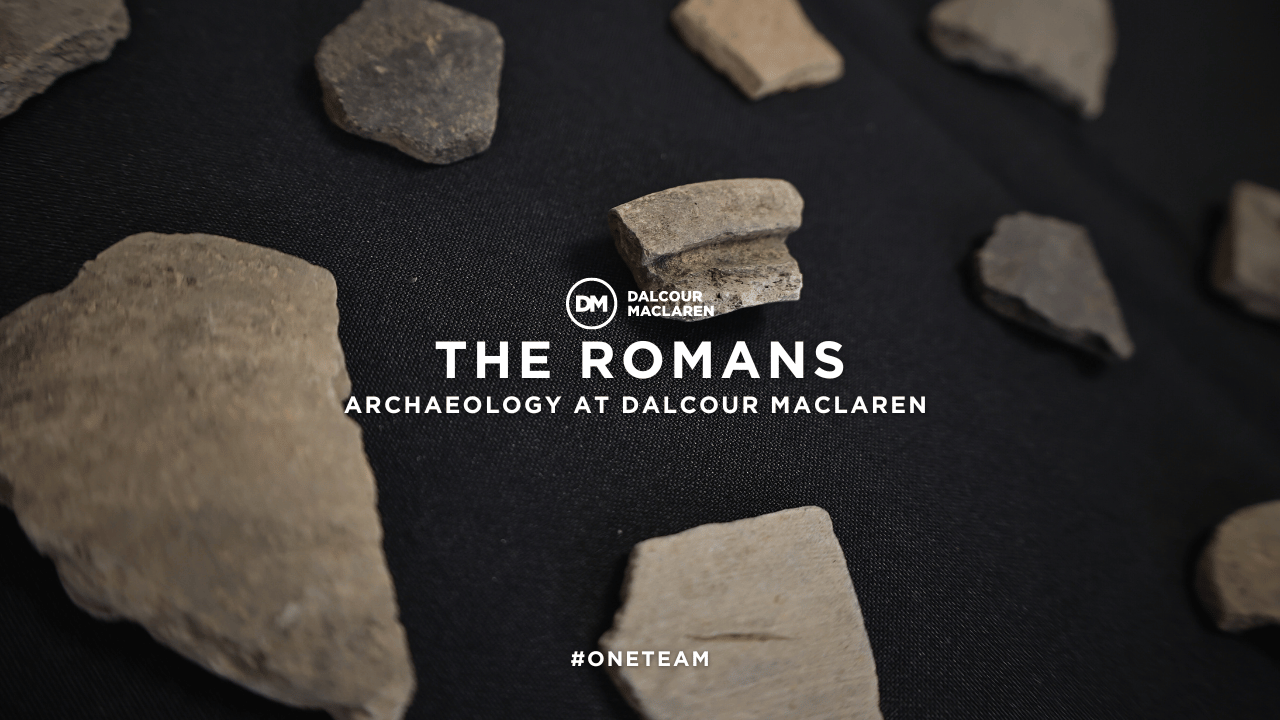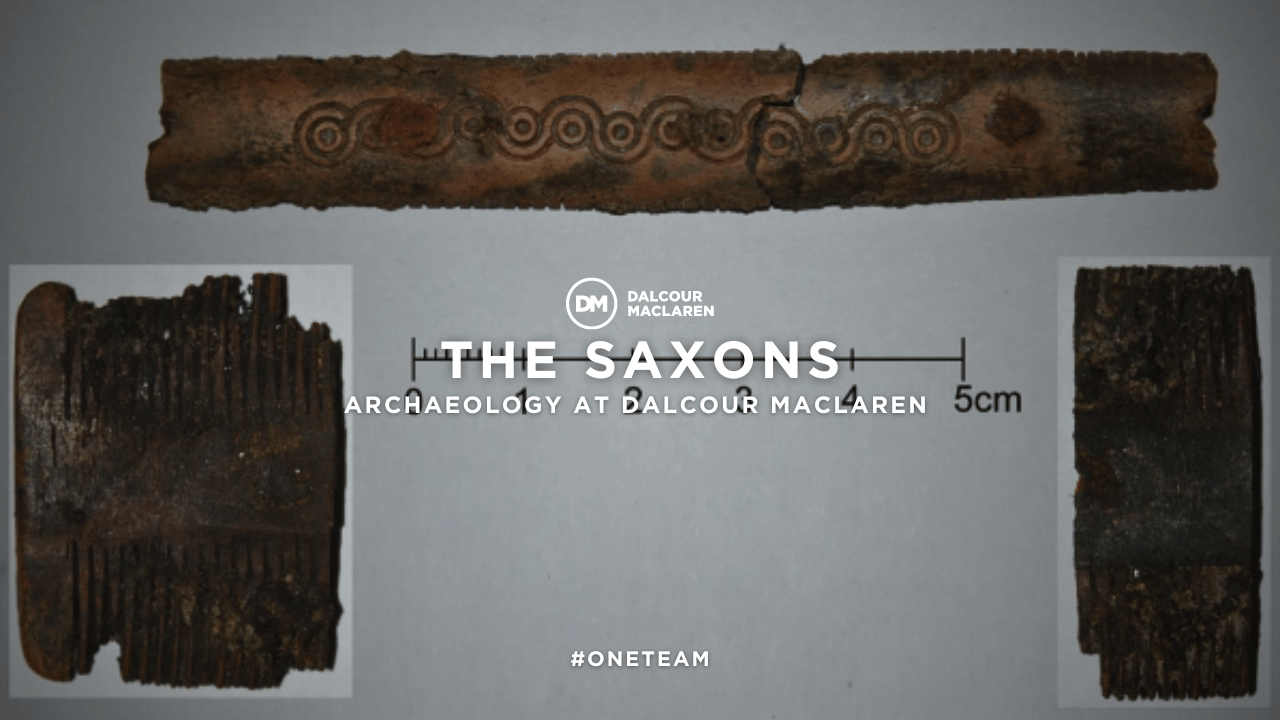To celebrate this year’s Festival of British Archaeology, the biggest archaeological celebration in the UK, Heidi Archer, Senior Archaeologist at Dalcour Maclaren, shares some interesting facts about different archaeological periods throughout history.
Pre-History
Prehistory in Britain spans from around 900,000 years ago to the Roman invasion in AD 43, with the earliest inhabitants being Neanderthals who adapted to climate changes and used stone tools.
About 10,000 years ago, during the Mesolithic period, hunter-gatherers refined their skills to hunt megafauna, and 6,000 years ago, Neolithic people adopted agriculture and built monuments like Stonehenge. The Bronze and Iron Ages, beginning 4,000 years ago, marked significant advancements in metalworking.
The Romans
From AD 43 to AD 410, the Romans brought their Mediterranean lifestyle to Britain, establishing military forts, towns, and villas with advanced amenities like mosaics and underfloor heating.
They installed native client kings to enforce Roman rule, leaving behind a rich material culture including pottery and the notable Vindolanda writing tablets. Roman architecture endures, with significant remains in Chester, Bath, Wroxeter, and military sites along Hadrian’s Wall.
The Saxons
Following the Roman withdrawal in the 5th century, the Saxons deliberately abandoned Roman buildings and rules, establishing new kingdoms each with its own ruler.
Migration between Britain and mainland Europe was common, leading to internal and external influences and frequent conflicts for dominance, while Danish and Norwegian tribes conducted raids during the later Saxon period. Significant archaeological finds from this era include the Sutton Hoo boat burial, the Saxon town of Lundenwic beneath modern London, and numerous treasure hoards, with Saxon place names such as Edinburgh and Peterborough still in use today.
Medieval
William of Normandy’s victory at the Battle of Hastings in 1066 marked the beginning of medieval Britain, a period with abundant archaeological remains ranging from pottery to large-scale town planning and agriculture, including ridge and furrow earthworks and deserted villages.
Tools like aerial mapping, photography, and LiDAR data help identify these earthworks, while the construction of many castles, streetscapes, and religious buildings also dates to this time. The medieval economy operated on a feudal basis, and with the rise of written records, a combination of archaeology and traditional history provides a detailed picture of medieval life.
Post-Medieval
The post-medieval period from AD 1485 to the First World War is characterized by industrialization, mechanization, and mass production, significantly reshaping Britain’s landscape during the Industrial Revolution.
Extensive canal, rail, and communication networks facilitated nationwide and global trade, resulting in a plethora of mass-produced artefacts, from blue and white transfer-printed ware to ubiquitous clay pipes. The 19th century saw the advent of detailed mapping and photography, providing archaeologists with valuable contemporary resources for site analysis.
Since undertaking their first in-house archaeological fieldwork in March 2021—evaluating a Severn Trent Water pipeline route near Stroud—our Archaeology & Heritage team has completed 57 archaeological projects, with ten more lined up for the latter half of this year. Their work spans diverse sites: from 208-174 million-year-old sea beds to 5,840-year-old ditches, and pottery dating from 2,500 to just 50 years ago.
Dalcour Maclaren’s archaeologists have ventured into three world heritage sites (Bath, Ironbridge, Stonehenge & Avebury), seven city centres, and countless fields. Their work is as varied as it is valuable, reflecting a deep commitment to uncovering and preserving the past.







